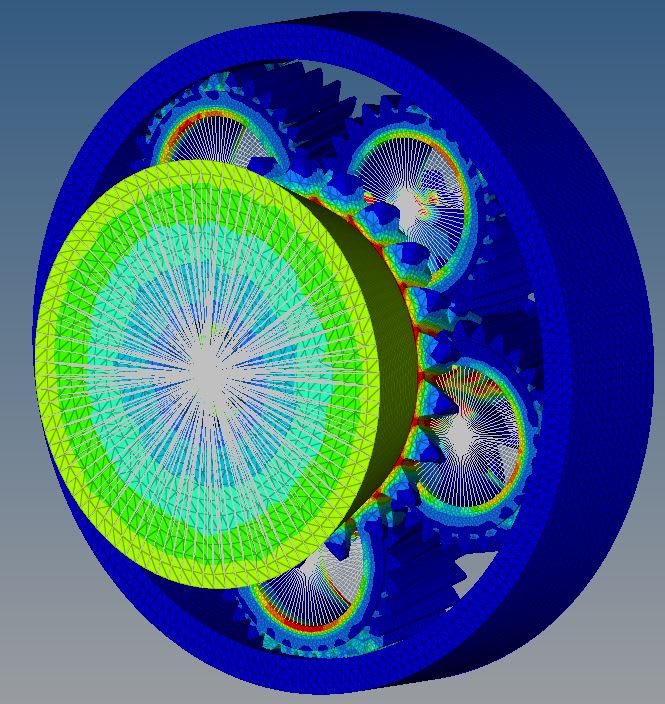Hello everyone,
I've performed a non-linear quasi-static with seven components. I applied a moment in the middle component that transfer the load to the others gears. The behavior of others component are according to the expectations. But when I assign 20% of scale in deformation (in order to see the animation) the middle component has a strange behavior. Someone knows why does it happen? Follow the pictures before and after assigned the scale. I'm using Hypermesh/Optistruct.


Before: After:
Thanks in advance.
Henry
I've performed a non-linear quasi-static with seven components. I applied a moment in the middle component that transfer the load to the others gears. The behavior of others component are according to the expectations. But when I assign 20% of scale in deformation (in order to see the animation) the middle component has a strange behavior. Someone knows why does it happen? Follow the pictures before and after assigned the scale. I'm using Hypermesh/Optistruct.


Before: After:
Thanks in advance.
Henry

![[tongue] [tongue] [tongue]](/data/assets/smilies/tongue.gif)